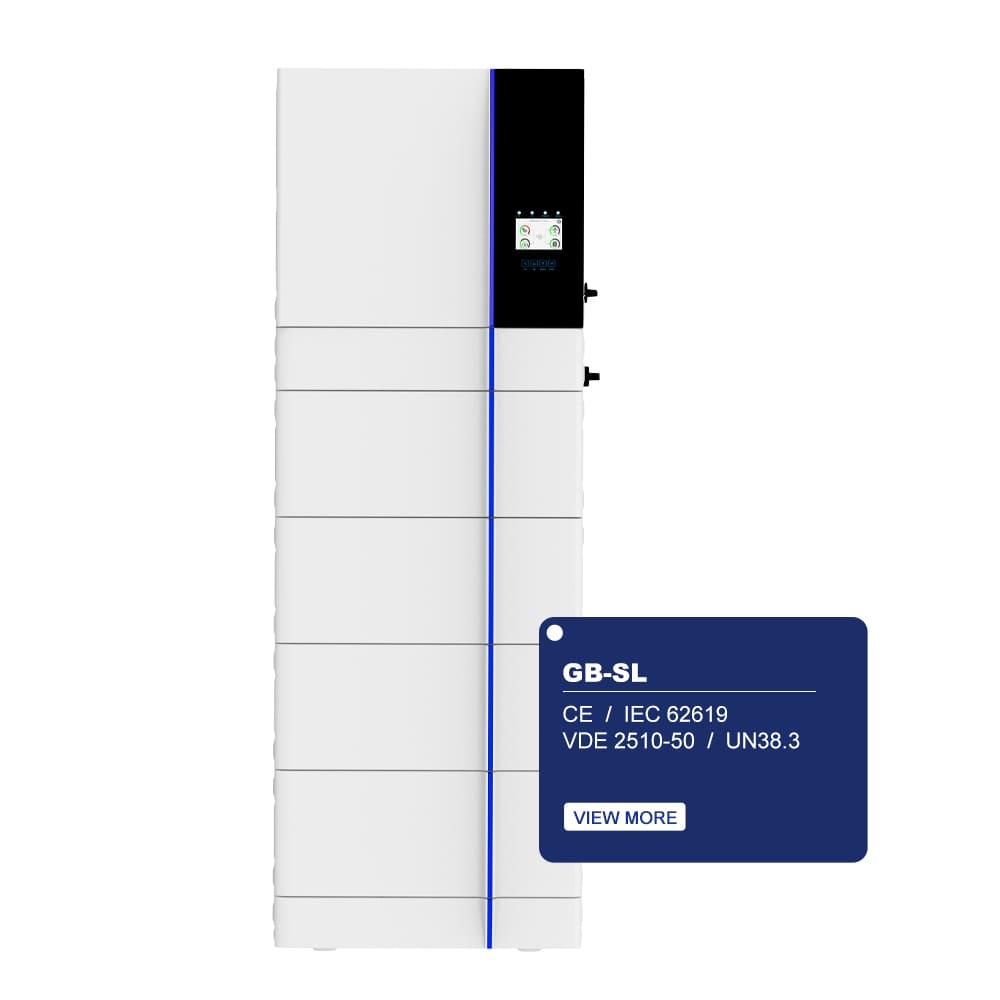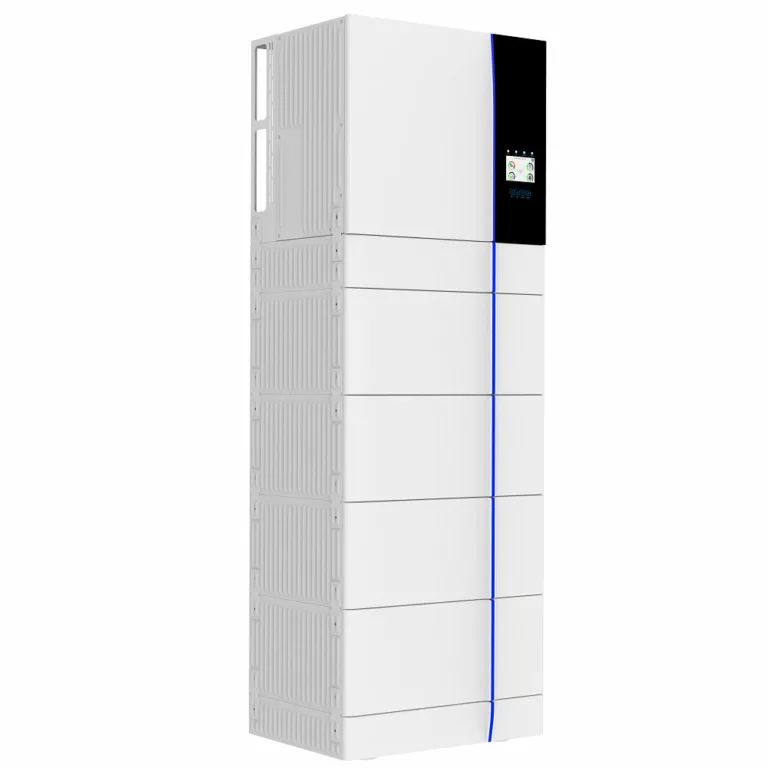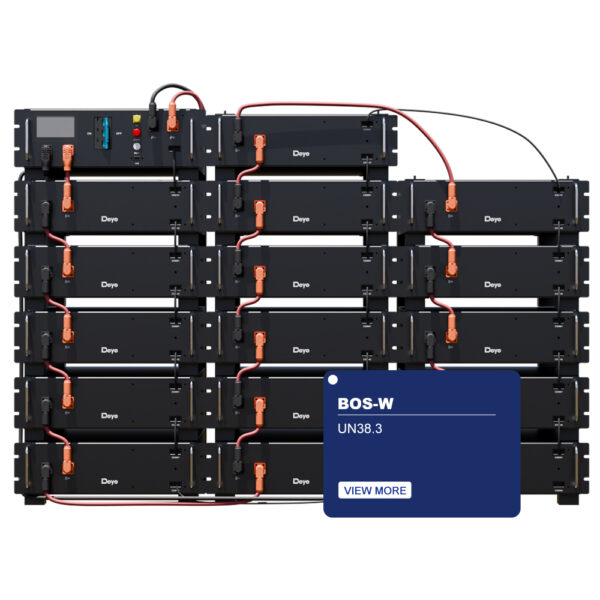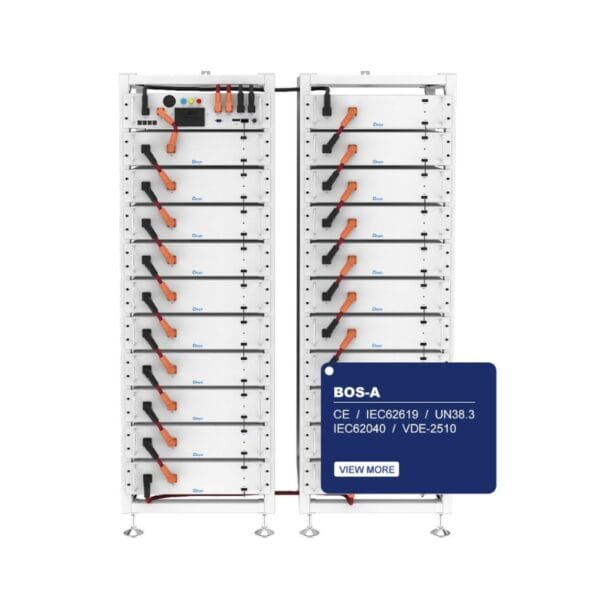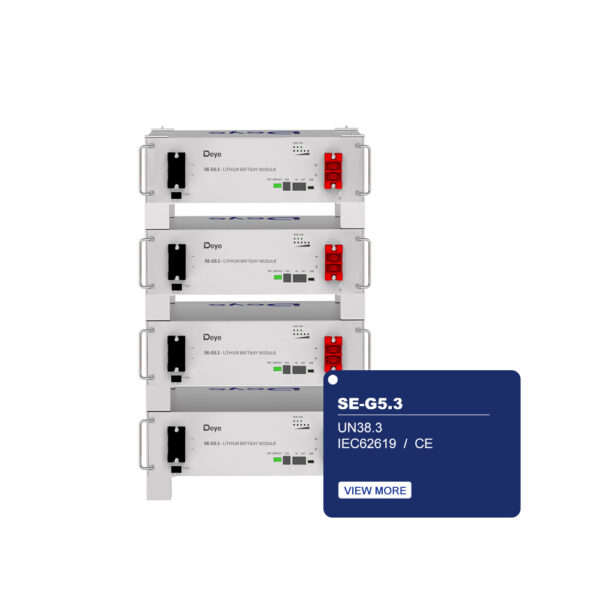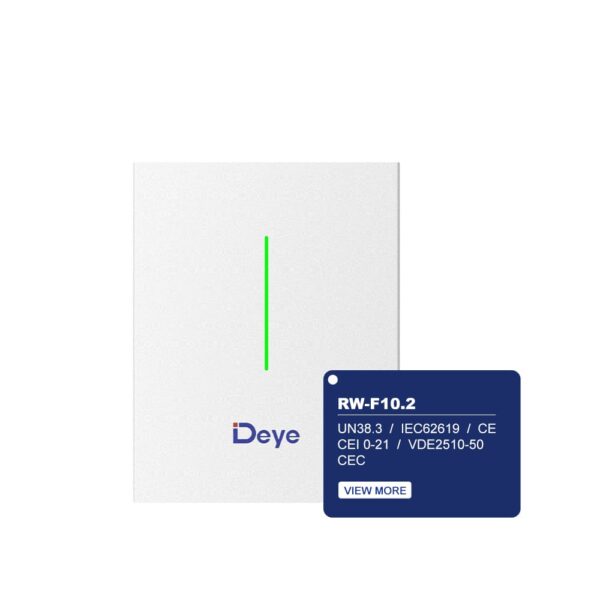GB-SL (EU)
- Scalable Power Range: 5kW to 25kW capacity options for complete residential ESS solutions
- All-in-One Design: Integrated green energy storage system with sleek aesthetics for seamless home integration
- Maximum Performance: 100% unbalanced output per phase with up to 60% rated power capability
- Expandable Configuration: Support for up to 10 parallel units for growing energy needs
- Advanced Battery Technology: High-voltage lithium iron phosphate battery pack for solar panels
- Dual Grid Compatibility: Works with both on-grid and off-grid solar PV battery installations
- Smart Thermal Management: Intelligent temperature monitoring with natural cooling system
- Cable-Free Connections: Modular design improves efficiency and reliability of battery energy storage solutions
SKU: GB-SL
Categories: ESS Battery, High Voltage Series (HV)
Description
The Deve GB-SL series represents a cutting-edge green energy storage system designed specifically for European residential markets, offering comprehensive power capacities from 5kW to 25kW (GB-SL5K/6K/8K/10K/12K/15K/20K/25K-EU). This innovative residential ESS combines elegant design with advanced energy management capabilities, delivering premium battery energy storage solutions for modern homes.
| Specification | Details |
|---|---|
| Cell Chemistry | LiFePO4 (Lithium Iron Phosphate) |
| Module Energy | 4.09 kWh per module |
| Module Voltage | 102.4V nominal |
| Module Capacity | 40Ah |
| System Configurations | 2-6 modules (8.18-24.54 kWh total capacity) |
| Operating Voltage Range | 204.8V – 614.4V |
| Charge/Discharge Current | 20A recommended, 40A maximum, 50A peak |
| Operating Temperature | Charging: 0°C to 55°C Discharging: -20°C to 60°C |
| Cycle Life | >6,000 cycles at 70% EOL (25°C, 0.5C/0.5C) |
| Warranty | 10 years comprehensive coverage |
| IP Rating | IP65 (dust-tight and water-resistant) |
| Humidity Range | 5-85% RH |
| Maximum Altitude | 2,000 meters |
| Noise Level | <55dB (whisper-quiet operation) |
| Storage Temperature | 0°C to 35°C |
| Communication Protocols | CAN2.0/RS485 |
| Thermal Management | Natural cooling system |
| Installation Type | Floor mount design |
| Recommended Discharge Depth | 90% |
Key Features
- All-in-One Integrated Design: Features a sleek, integrated design that seamlessly blends with residential environments while providing beautiful aesthetics and superior scene integration for any home setting.
- Maximum Performance Output
- Delivers 100% unbalanced output per phase
- Maximum output capability up to 60% of rated power
- Ensures optimal energy delivery even under varying load conditions
- Scalable & Flexible Installation
- Supports up to 10 units in parallel configuration
- Compatible with both on-grid and off-grid operations
- Expandable system design grows with your energy needs
- Advanced Energy Management
- Supports energy storage from diesel generators
- High-voltage stack technology with series-connected modules
- Cable-free module connections improve system efficiency and reliability
- Superior Thermal Management
- Intelligent temperature monitoring of critical components including cells and power connections
- Natural cooling system ensures optimal operating temperatures
- Wide temperature operation range with optional heating function for cold climates
- Certifications & Compliance: Fully certified to European standards including CE, IEC 62619, VDE 2510-50, and UN38.3, ensuring complete safety and regulatory compliance.
Why Choose Deye GB-SL?
The GB-SL series combines German engineering precision with advanced lithium iron phosphate technology, delivering exceptional performance, safety, and longevity in green energy storage. Its modular design ensures future expandability while the all-in-one integration simplifies installation and maintenance.
